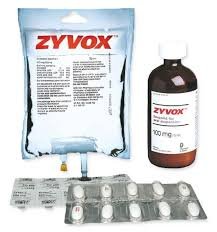
Introduction:
In the realm of modern medicine, the battle against infectious diseases constantly evolves. Antibiotic resistance poses a significant challenge, necessitating the development of novel therapeutic options. Zyvox, an antibiotic introduced in the early 2000s, stands as a beacon of hope in this fight. This article delves into the depths of Zyvox, exploring its uses, mechanism of action, side effects, and future prospects.
A Brief Overview of Zyvox:
Zyvox, whose generic name is linezolid, belongs to a class of antibiotics known as oxazolidinones. Approved by the FDA in 2000, it was a groundbreaking addition to the antibiotic arsenal. Initially developed by Pharmacia & Upjohn (now part of Pfizer), Zyvox was primarily intended for the treatment of Gram-positive bacterial infections.
Uses of Zyvox:
Zyvox finds its utility in combating various bacterial infections, notably those caused by methicillin-resistant Staphylococcus aureus (MRSA) and vancomycin-resistant Enterococcus faecium (VRE). These pathogens, notorious for their resistance to conventional antibiotics, often lead to severe and sometimes life-threatening infections. Zyvox’s efficacy against these resistant strains has made it a vital tool in clinical practice.
Mechanism of Action:
The mechanism of action of Zyvox is distinct from that of other antibiotics. Unlike traditional antibiotics, which target specific components of bacterial cells, Zyvox inhibits bacterial protein synthesis by binding to the 23S ribosomal RNA of the 50S subunit. This binding prevents the formation of the initiation complex, thus halting the translation process. By interfering with bacterial protein synthesis, Zyvox effectively impedes bacterial growth and replication.
Clinical Applications:
Zyvox’s broad spectrum of activity makes it valuable in treating various infections, including skin and soft tissue infections, pneumonia, and bloodstream infections. Its oral and intravenous formulations offer flexibility in administration, allowing for both inpatient and outpatient treatment options. Additionally, Zyvox has demonstrated efficacy in complicated skin and soft tissue infections, providing clinicians with a reliable therapeutic choice.
Adverse Effects:
Despite its efficacy, Zyvox is not without side effects. Common adverse effects include gastrointestinal disturbances such as nausea, vomiting, and diarrhea. Headache, dizziness, and insomnia may also occur. Prolonged use of Zyvox can lead to myelosuppression, manifested by thrombocytopenia, anemia, and leukopenia. Furthermore, the development of peripheral neuropathy, particularly with long-term therapy, remains a concern. Careful monitoring of blood cell counts and neurological symptoms is essential during Zyvox treatment.
Drug Interactions:
Zyvox’s pharmacokinetic profile necessitates caution when co-administered with certain medications. It inhibits monoamine oxidase (MAO), raising the risk of serotonin syndrome when combined with serotonergic agents such as selective serotonin reuptake inhibitors (SSRIs), serotonin-norepinephrine reuptake inhibitors (SNRIs), and tricyclic antidepressants. Additionally, concurrent use of Zyvox with adrenergic or dopaminergic agents may precipitate hypertensive crises. Clinicians must exercise vigilance and consider potential drug interactions before prescribing Zyvox.
Future Perspectives:
As antibiotic resistance continues to escalate, the development of new antimicrobial agents remains imperative. Zyvox paved the way for oxazolidinone antibiotics, inspiring further research into this class of compounds. Efforts to enhance Zyvox’s efficacy and mitigate adverse effects are ongoing. Additionally, exploring novel formulations and delivery systems may improve its clinical utility. Collaborative initiatives between pharmaceutical companies, academic institutions, and governmental agencies are crucial in advancing antimicrobial research and combating the global threat of antibiotic resistance.
Conclusion:
Zyvox stands as a testament to the ingenuity of modern medicine in addressing the challenges posed by antibiotic resistance. Its efficacy against multidrug-resistant pathogens has saved countless lives and continues to be a cornerstone of infectious disease management. However, vigilant monitoring for adverse effects and prudent antibiotic stewardship are essential to ensure its safe and effective use. As research progresses and new antimicrobial strategies emerge, Zyvox remains a beacon of hope in the ongoing battle against infectious diseases.
